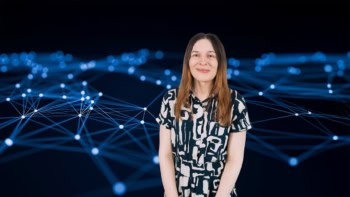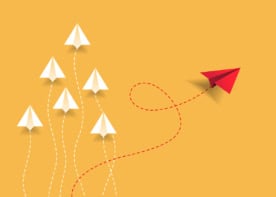
Companies led by physicists took top honours in the 2020 SPIE Start-up Challenge, beating out dozens of other early-stage firms to scoop first and second prize in the challenge’s “deep tech” division. Ronny Timmreck, chief executive of Senorics, wowed the judging panel with his company’s low-cost optical sensors, while Anshuman Das of Labby came second for applying advanced spectroscopy and machine learning to milk analysis in dairy farms. Zak Niazi, an optical engineer whose company Circle Optics has developed a simplified camera for shooting 360-degree video, rounded out the winning group with a third-place finish.
The challenge took place during the Photonics West conference in San Francisco, US, which attracts photonics experts from around the world for a week of talks and networking. This year, for the first time in the contest’s 10-year history, competitors were split into two divisions: one for healthcare and one for “deep tech” – a catch-all term for products based on engineering innovations or advances in basic science. The best firms in each division took away giant cheques worth $10,000, while runners-up received $5000 and third-place contestants picked up $2500.
For Timmreck and Das, the 2020 result was all the sweeter because both of their companies made the semi-finals in the 2018 and 2019 competitions, only to lose out before reaching the finals. This time, Timmreck drew praise from competition officials for adapting his pitch to focus on the commercial advantages of Senorics’ technology, which uses organic light-emitting diodes (OLEDs) rather than costly indium-gallium-arsenide sensors to detect contaminants in food. Das, for his part, told Physics World that Labby originally developed its suite of spectrometers for analysing wine and spirits, only to identify a bigger market in the dairy industry, where milk testing is a valuable indicator of herd health.

In the healthcare division, Odin Technologies got the judges’ nod for combining a wearable patch that optically measures blood flow with a machine-learning algorithm that distinguishes between healthy and unhealthy flow patterns. Steven Hansen, the company’s chief executive, has a background in athletic training, and he teamed up with optics experts after learning about the poor outcomes for patients with acute compartment syndrome (ACS) – a condition that develops when swelling from an earlier injury prevents blood from reaching muscle tissue. The runner-up in the healthcare division, Sanna Gaspard of Rubitection, was honoured for developing a system for diagnosing and monitoring bed sores, while the third-place contestant, Rachel Kuperman of Eysz, is using optical eye-tracking technology to diagnose seizures.
The judges evaluated the entries according to four criteria: the contestants’ delivery of their five-minute “pitch”; the quality of their business case and the competitive advantage their technology offers; the quality of the financial case; and the company’s overall trajectory and growth potential. Out of more than 100 entrants, 41 advanced to the semi-finals, while in the final round six companies in each division pitched their ideas to a panel of judges drawn from the investor community and the optics and photonics industry.



